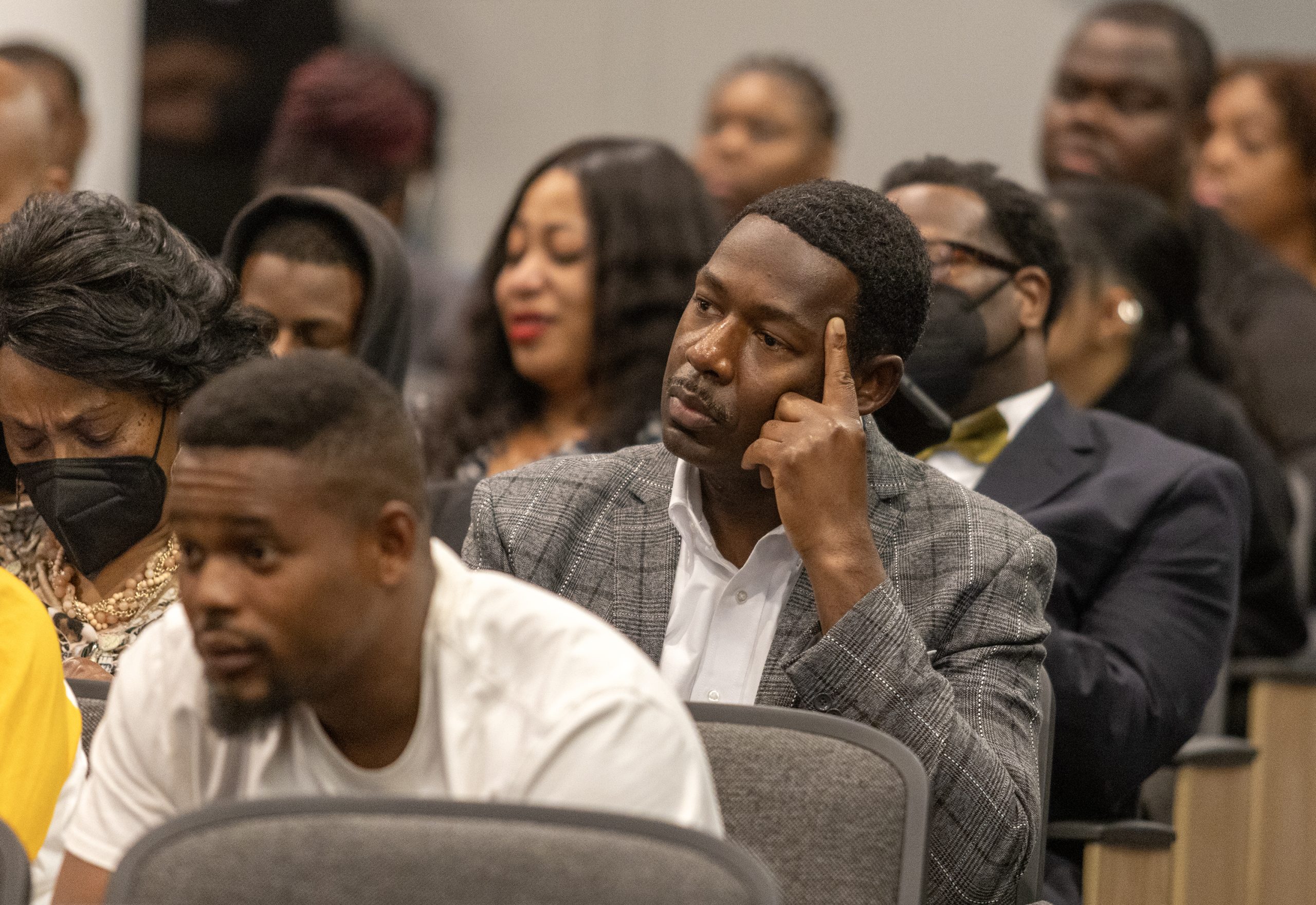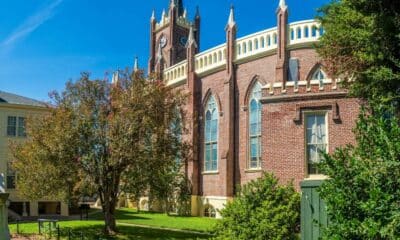Mississippi Today
After series of community meetings, JPS parents still seek more information on proposed school closures

Jackson Public Schools concluded its series of community meetings on proposed school closures Tuesday night with multiple parents saying they still lacked clarity about the specifics of how this plan will be implemented.
“You came up with this plan, but you haven't talked to anybody that it's going to impact,” said Angela Samuels, a Casey Elementary parent.
In October, JPS district leadership introduced a plan to close 16 school buildings because of declining enrollment in the district. The district has lost around 9,500 students between the 2015-16 and 2023-24 school years, about a third of its population. The district has also previously consolidated schools.
The following buildings are on the proposed closure list:
- Clausell Elementary School
- Dawson Elementary School
- G. N. Smith Elementary School
- Green Elementary School
- Key Elementary School
- Lake Elementary School
- Lester Elementary School
- Oak Forest Elementary School
- Obama IB Elementary
- Raines Elementary School
- Shirley Elementary School
- Sykes Elementary School
- Wells APAC Elementary
- Chastain Middle School
- Whitten Middle School
- Wingfield High School
The district hosted four community meetings to receive public feedback on the plan and answer questions. The structure of these meetings changed multiple times as the district responded to time constraints and concerns about adequate opportunities for community participation.
Hundreds of people attended the first community meeting at Forest Hill High School, where concerns were raised about the social impact these mergers will have on students and communities as well as the large number of school closures in south Jackson. The meeting began with a presentation of the consolidation plan, which was followed by over an hour of concerns and questions from community members.
Since the first meeting ran over its 7:30 p.m. end time, JPS officials restructured the meetings at Callaway and Provine High Schools to have community members submit their questions via a QR code instead of giving them a microphone. At the Provine meeting on Nov. 6, attendees interrupted Superintendent Errick Greene to voice frustration that community members were not getting to speak directly, which resulted in a back-and-forth before the meeting was ended early.
Sherwin Johnson, communications director for the district, said after the Nov. 6 meeting that the change was made for efficiency and they did consider the meeting to be engaging, but they would take the feedback under advisement for the final meeting.
At the final meeting Tuesday at Murrah High School, Greene skipped the recap of the consolidation proposal and instead reviewed the feedback they had already received, reserving most of the time for speakers. Community members had a 90-second limit at the microphone and were told in advance their questions would not be answered tonight, instead having responses posted to the district's FAQ page about the consolidation plan.
Timothy Bracey with Operation Good, a community organization, had been one of the attendees to express frustration at the Nov. 6 meeting. While he still has concerns about the plan overall, he said the meeting Tuesday was an improvement.
“It was better in the sense that they let the people ask their questions, but at the same time, if they are going to have these optimization plans, the questions that the community has, they should have answers for them,” Bracey said.
Other parents also expressed concern about the lack of answers at the meeting and said they would like specificity from the district on how empty buildings will be used or maintained and how the district will work to build new school communities.
Samuels, the Casey Elementary parent, expressed disappointment with some of Greene's comments, particularly his remarks regarding the timeline of the consolidation plan. Greene shared at the end of the meeting that he had initially intended to present this plan in the spring, allowing for almost a full year of discourse on the plan.
“A full year of all of us doing this, imagine that,” he said. “As concerned, angsty as people are today, imagine a full year of this. I'm pretty convinced that that was not a good idea.”
Samuels said that she understands that change is uncomfortable but that it feels like the district is rushing the process.
“Are you really valuing the community's input if you want to condense the time we had to actually give you our input?” she said.
The district did not respond to a follow-up question about Greene's remarks by press time.
Some speakers at the Tuesday meeting expressed frustration with the amount of money the district loses in payments to charter schools, particularly given those schools' recent poor performance. The district has lost $48 million in payments to charters since 2015 according to a handout distributed at the meeting, nearly half of the total funding loss.
Greene also shared more details Tuesday about possible use for the buildings on the closure list, identifying some to be leased, others to be redeveloped in partnership with the Jackson Redevelopment Authority, and some to be demolished. He emphasized that none of these plans have been finalized.
- Lease: Siwell, Brinkley
- Redevelop: Poindexter, Enochs, George, Bradley, Brown, Rowan, Barr
- Demolish: French, Baxter, Key, Woodville Heights, Dawson, Raines
U.S. Rep. Bennie Thompson has also offered to help the district identify federal funds that could be used to help repurpose closed buildings.
Kemba Taylor, a McWillie Elementary parent, said that she understands the district has shrunk and perhaps students need to be moved, but worries the district is not leaving itself room for growth if they sell off or demolish buildings.
“If people do leave the charter schools and then with all the new babies being born, I think in 10 more years we might find ourselves in a new kind of bind,” she said. “These kids went somewhere, they might come back.”
This article first appeared on Mississippi Today and is republished here under a Creative Commons license.
Mississippi Today
On this day in 1983


May 6, 1983

A federal judge sentenced Raymond Bledsoe to life for beating Black jazz saxophonist Steven Harvey to death in a Kansas City park because of his race.
A Missouri jury had acquitted Bledsoe of murder, and afterward, he reportedly bragged to his girlfriend about killing a “n—–” and getting away with it.
Harvey's family members, Alvin Sykes and the Steve Harvey Justice Campaign convinced federal authorities to pursue the case. At the time, the conviction was reportedly the fourth under the Civil Rights Act of 1968.
In 2013, federal corrections authorities denied parole to Bledsoe. To date, he remains the longest serving inmate convicted under that Civil Rights Act.
Sykes later helped bring about both the Justice Department's reopening of the Emmett Till case and the passage of the Emmett Till Unsolved Civil Rights Crime Act.
Sykes died in 2021, and his New York Times obituary read, “Though he never took a bar exam, Mr. Sykes was a brilliant legal and legislative operator whose admirers included City Council members, politicians and U.S. attorneys general from both parties. … He led a monk's life in the name of social justice. He rarely held a job, wore second hand clothing and lacked a permanent address for long stretches of time, staying with friends instead and living off donations and, later, speaker fees. He never learned to drive and so walked everywhere, most often to the reference section of the library in Kansas City, Missouri, where he did his research, or to a booth at a restaurant that he used as an informal office, his papers surrounded by cups of coffee and stubbed-out cigarettes.”
This article first appeared on Mississippi Today and is republished here under a Creative Commons license.
Mississippi Today
Podcast: How the 2024 Medicaid expansion debate died

Mississippi Today's Adam Ganucheau, Bobby Harrison, Geoff Pender, and Taylor Vance discuss the breakdown of Medicaid expansion negotiations in the Legislature.
This article first appeared on Mississippi Today and is republished here under a Creative Commons license.
Did you miss our previous article…
https://www.biloxinewsevents.com/?p=355689
Mississippi Today
On this day in 1917
May 5, 1917

Eugene Jacques Bullard became the first Black American combat pilot.
After the near lynching of his father and hearing that Great Britain lacked such racism, the 12-year-old Georgia native stowed away on a ship headed for Scotland. From there, he moved to Liverpool, England, where he handled odd jobs before becoming a boxer, traveling across Europe before he settled in Paris.
“It seems to me that the French democracy influenced the minds of both White and Black Americans there and helped us all to act like brothers as near as possible,” he said. “It convinced me, too, that God really did create all men equal, and it was easy to live that way.”
When World War I began, he was too young to fight for his adopted country, so he and other American expatriates joined the French Foreign Legion. Through a series of battles, he was wounded, and doctors believed he would never walk again.
No longer able to serve in the infantry, an American friend bet him $2,000 that he could not get into aviation. Taking on the challenge, he earned his “wings” and began fighting for the French Aéronautique Militaire.
He addressed racism with words on his plane, “All Blood Runs Red,” and he nicknamed himself, “The Black Swallow of Death.”
On his flights, he reportedly took along a Rhesus monkey named “Jimmy.” He tried to join the U.S. Air Service, only to be turned away because he was Black. He became one of France's most decorated war heroes, earning the French Legion of Honor.
After the war he bought a Paris nightclub, where Josephine Baker and Louis Armstrong performed and eventually helped French officials ferret out Nazi sympathizers. After World War II ended, he moved to Harlem, but his widespread fame never followed him back to the U.S.
In 1960, when French President Charles de Gaulle visited, he told government officials that he wanted to see his old friend, Bullard. No one in the government knew where Bullard was, and the FBI finally found him in an unexpected place — working as an elevator operator at the Rockefeller Center in New York City.
After de Gaulle's visit, he appeared on “The Today Show,” which was shot in the same building where he worked.
Upon his death from cancer in 1961, he was buried with honors in the French War Veterans' section of the Flushing Cemetery in Queens, New York.
A sculpture of Bullard can be viewed in the Smithsonian National Space and Air Museum in Washington, D.C., a statue of him can be found outside the Museum of Aviation, and an exhibit on him can be seen inside the National Museum of the U.S. Air Force, which posthumously gave him the rank of a second lieutenant. He is loosely portrayed in the 2006 film, “Flyboys.”
This article first appeared on Mississippi Today and is republished here under a Creative Commons license.
-
SuperTalk FM4 days ago
Driver’s education set to become mandatory in Mississippi as bill passes
-
SuperTalk FM3 days ago
State approves $160M to expand Highway 7 to four lanes in Lafayette County
-
SuperTalk FM7 days ago
Festival merger in Leland sets up one major event for Mississippi Delta
-
Mississippi Business5 days ago
Geartek expanding operations in Alcorn County
-
Mississippi News6 days ago
Two women accused of shoplifting across southeast captured in Mississippi
-
Mississippi News4 days ago
Altercation at Mississippi police department leads to officer-involved shooting
-
Mississippi News6 days ago
Starkville police make arrest in shooting at Dawg Wash South
-
Mississippi News22 hours ago
Winston Co. Sheriff’s Office investigates shooting at Dave’s Club










































